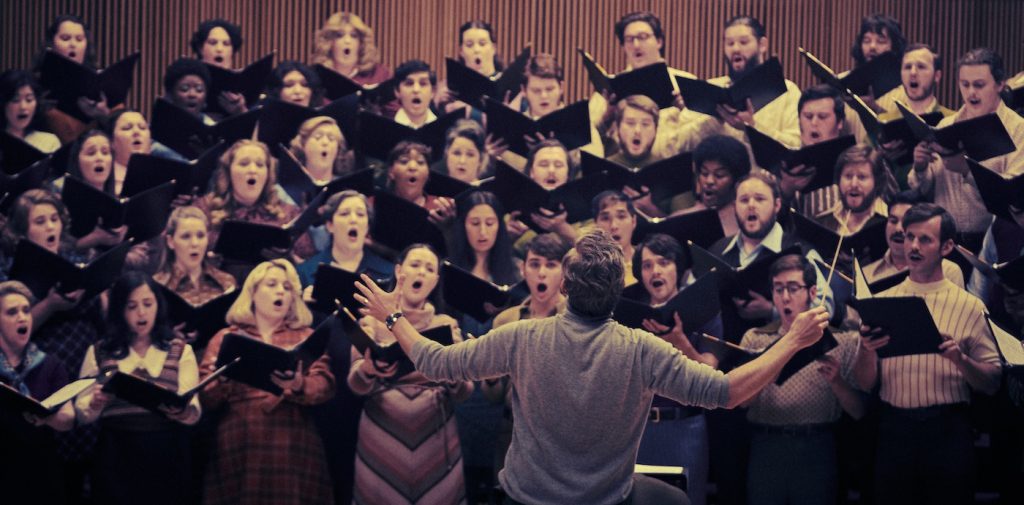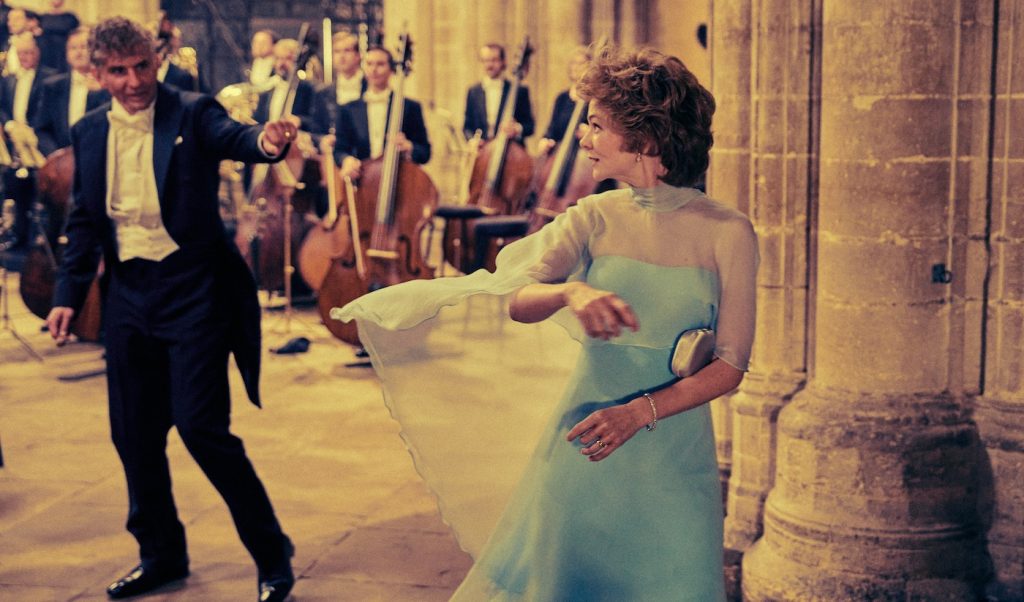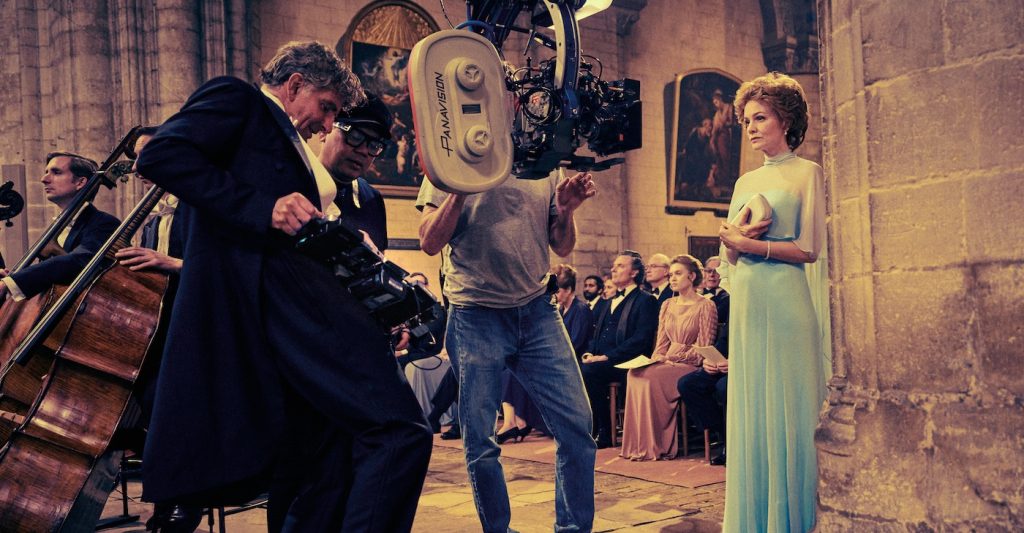“Maestro” Sound Mixer Steven Morrow on Recreating Mahler’s “Resurrection” at the Ely Cathedral
Bradley Cooper knew Maestro was going to be the next film he directed before the proverbial ink dried on A Star Is Born (2018), his feature debut, which he starred in alongside Lady Gaga about a troubled musician’s relationship with alcohol. The adaptation, deservingly so, went on to be nominated for eight Academy Awards and won Best Original Song for “Shallow.” This time, the multi-hyphenated actor trades in a guitar for a baton to embody Leonard Bernstein, the famed American conductor and composer who lived a double life as a married man and a promiscuous bi-sexual.

The dramatic biopic, which is receiving a number of accolades, unravels the complexities of a couple in love while also being an ode to the symphony. But Cooper caringly connects the two like lines in a poem, strengthening the emotional journey between Lenny and his wife Felicia (magnetically tuned by Carey Mulligan) through the music.

The height of their unequivocal admiration for each other plays out in back-to-back scenes after the pair have been separated for some time. Inside the backdrop of a gorgeous restaurant, Felicia, her daughter (Maya Hawke), and Lenny’s sister Shirley (Sarah Silverman) are having lunch. It’s here Felicia divulges about a fumbled date only to realize her feelings about Leonard. “Look at me now. Who’s the one who hasn’t been honest? I miss him… that child of mine.” The camera cuts from a close-up of her face to Leonard conducting the musical climax of the film: the London Symphony Orchestra in Mahler’s “Resurrection” at Ely Cathedral. To his surprise, Felicia stands among the spectators.
Sonically capturing the film on location was production sound mixer Steven Morrow, who worked with Cooper on A Star Is Born, a collaboration which Morrow admits has “gotten closer over the years,” allowing their shorthand “to get even shorter.” “The music you hear in the movie was played on set for each scene,” says Morrow, a three-time Oscar nominee. “Before we started shooting, we went page by page to map out the specific songs that would be played.” Doing so not only informed events aurally for actors but influenced the camera movement and lighting in scenes for cinematographer Matthew Libatique (A Star Is Born). “We’re there to support Bradley’s greater vision, and this allowed us to have these locked-in moments. But on the day if something didn’t feel right, Bradley’s flexible enough that he can change things on the spot and we would have everything ready.”
Jason Rudder (executive music producer and supervising music editor) oversaw music clearance during preproduction and sent Morrow the titles where the production mixer laid out a master Pro Tools session with shortcut keys. Some tracks needed to be trimmed down from their original length, which required additional clearance.
For the Ely Cathedral sequence, Cooper sought to recreate the moment using the London Symphony Orchestra and London Choir inside the actual location, a tremendously moving performance. “Bradley really wanted the scene to be live because you can’t create the same feeling in a studio,” says Morrow. “Because we were in Covid protocols at the time, the movie got delayed so we could sit the orchestra close together and play live as opposed to miming it.”
When filming commenced, the major moment required a large team to pull off the recording. The company Classic Sound in London was brought in to rig microphones inside the 900-year-old cathedral. Morrow, Ruder, and music producer Nick Baxter provided technical specs for Classic Sound during the rigging process, which took several days to complete. The expectation was to limit the number of microphones in the frame while still recording for Dolby Atmos. Rigs were placed above the ceiling, and any microphone that required being removed from the picture was later painted out by visual effects. Another challenge was the proximity of the orchestra.

“Modern orchestras don’t play as close as they used to because the sound levels can damage their hearing,” notes Morrow. “We convinced the London Symphony Orchestra to put everyone back in their original place, and we brought in instruments to measure the sound level that every player was receiving. We also had special earplugs for all the players so their decibel level could come down, so we wouldn’t be damaging their hearing. We aired on the side of protecting the player because it is the right thing to do.”
Also part of the performance are two opera singers (Rosa Feola and Isabel Leonard) who stand behind Leonard conducting the symphony. Historically accurate microphones were placed on stands in front of them to match the original 1973 version. “We put radio mics on them like we normally do, but the floor microphones were picking them up while they were singing,” says Morrow. “It was more about the ambiance of the church so they could be a little further away, and it would still sound very close.”
The scene was filmed over two nights, recording 62 tracks of microphones. The tracks were recorded into multiple machines for redundancy to make sure they had it. For Bradley’s performance, he was given an earpiece that allowed conducting consultant Yannick Nézet-Séguin to give the director any technical notes. “Bradley is a student of perfection, and he wants to get it right,” says Morrow. “He was training and practicing for months to get the technical things to look right. Then the flourishes and the emotional aspect of that journey that was all Bradley.”
One of the final shots in the scene is a tracking oner that angelically moves from the profile of Leonard to the back of Felicia’s head before cutting to a matching close-up of her face from the prior restaurant scene. Her look of despair is now a smile of loving hope. Moments later, Leonard rushes over and passionately embraces her. “Darling, why did you come?” Felicia whispers, “There is no hate… There is no hate in your heart.” To pull the precise moment off, Morrow sent dolly grip John Mang the song so he could practice the move and time it perfectly. “The style of the movie is not quick cuts. It’s long, wide takes. It’s a modern-day art film with not a lot of coverage,” says Morrow. “Bradley committed to this kind of visual story and he really becomes part of the crew during the process.”
Praise for Cooper’s performance has come in a number of award-season accolades. But probably his biggest approval comes from the musicians themselves. “Two people from the orchestra said they were there playing the song with Leonard back in the ‘70s and said Bradley was him tonight,” recalls Morrow. “That kind of praise is not normal.”
For more on Maestro, check out these stories:
“Maestro” Costume Designer Mark Bridges on Charting the Bernstein’s Ever-Changing Style
“Maestro” Cinematographer Matthew Libatique Makes Music With the Camera
“Maestro” Editor Michelle Tesoro on Orchestrating the Epic Bernstein Love Story
Featured image: Maestro. (L to R) Soloists Isabel Leonard and Rosa Feola with Bradley Cooper as Leonard Bernstein (Director/Writer/Producer) in Maestro. Cr. Jason McDonald/Netflix © 2023.



